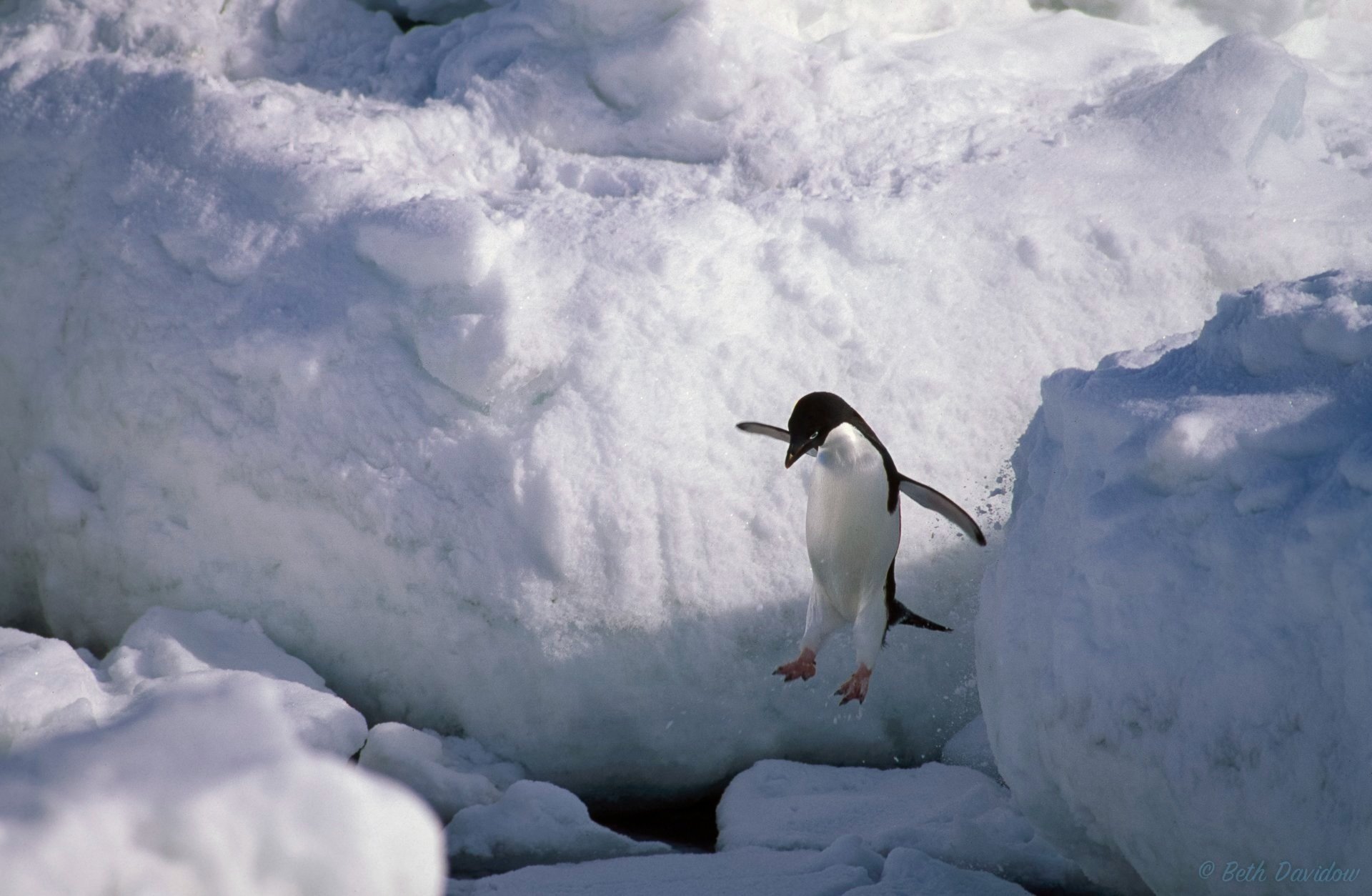
AMERICAN AVOCETS
American avocets (Recurvirostra americana) , in their lovely breeding plumage, rest in the shallow waters of a river in Yellowstone National Park, one stretching its elegant wings high. Avocets require shallow wetlands for their feeding and breeding grounds and habitat loss, due to development and climate change, are affecting their populations. Their fascinating feeding behaviors and sheer elegance make them a wonderful species to observe.

AMERICAN AVOCETS
American avocets (Recurvirostra americana) fly over a frozen river in Yellowstone National Park. These exquisite, long-legged wading birds forage in shallow water or on mud flats, often sweeping its recurved bill from side to side in water as it seeks crustacean and insect prey.

CANVASBACK
A gorgeous drake (male) canvasback duck (Aythya valisineria), its red eye brilliant in afternoon light, glides across Chesapeake Bay in the eastern United States. The species name valisineria comes from the wild celery Vallisneria americana, whose winter buds and rhizomes are the canvasback's preferred food during the non-breeding period. Canvasbacks are diving ducks and their preferred breeding areas are the prairie potholes of North America. Loss of this habitat (to various types of development, including agriculture, building, etc) have led to a decline in the population of this beautiful duck.

GREAT EGRET
A great egret (Ardea alba) in central Florida, displays during breeding season. In North America, large numbers of great egrets were killed around the end of the 19th century so that their plumes, known as "aigrettes", could be used to decorate hats. The National Audubon Society was created, in large part, to protect these birds. Numbers have since recovered as a result of conservation measures. However, in some parts of the southern United States, its numbers have declined due to habitat loss, particularly wetland degradation through drainage, grazing, clearing, burning, increased salinity, groundwater extraction and invasion by exotic plants. The egrets adapt well to human habitation and can be readily seen near wetlands and bodies of water in urban and suburban areas. Seeing them on their breeding grounds with their beautiful feathers spread out to attract a mate, is a sight to behold!

GREAT EGRET
A great egret (Ardea alba) in central Florida, displays during breeding season. Nesting in a rookery, the birds display to attract mates. In addition to the beautiful plumes that develop during breeding, the area over the bird’s bill turns green, making it a real eye-catching bird. The egrets feed on a variety of creatures that they generally stab with their long, yellow bill: crustaceans, fish, amphibians, insects, and even small mammals, like mice, and little reptiles! Great egrets are found not only in North America, but also in Africa, Asia, and Europe. They’ve even moved north into Scandinavia, proving themselves to be highly adaptable birds.

GAMBEL'S QUAIL
A beautiful Gambel’s quail (Callipepla gambelii) perches atop a rock in Las Vegas, Nevada. Like many desert-dwelling species, Gambel’s quail populations undergo a “boom-and-bust” cycle. A year with ample winter-spring rainfall that generates lots of green vegetation will yield larger clutches and an abundance of chicks. Dry winters mean less food and lower productivity. This male was standing lookout while the rest of the covey was foraging in the desert brush nearby.

MARBLED GODWIT
This marbled godwit (Limosa fedoa) stands in a shallow mudflat at Bear River National Wildlife Refuge, in Utah, the late afternoon light turning the reeds and reflections golden. The bright orange on the bill indicates that this bird is in breeding plumage. When not it breeding season, the bill is more of a pale pink, though still with the black tip. The godwits probe the mud for aquatic invertebrates, their main food source. Much of the habitat they need has been turned into farmland.

ADÉLIE PENGUIN
This young Adélie penguin (Pygoscelis adeliae) nervously (it seemed) stood on an ice block, as if to gather its courage before making this leap on the Antarctic Peninsula. One of only four species of penguins to nest on the Antarctic continent proper, these penguins build nests on bare, rocky ground. Antarctic explorer Apsley Cherry-Garrard, described the Adélie penguins as being “…extraordinarily like children, these little people of the Antarctic world, either like children or old men, full of their own importance…” These little brush-tailed penguins are bold and boisterous, and not afraid to challenge other animals even larger than themselves. When you are around these enchanting penguins, you can’t help but be happy as you watch them go about their lives in such harsh environments, doing their best to survive in a world that is rapidly changing due to climate change.

GENTOO PENGUINS

GREAT BLUE HERON

GREAT GRAY OWL

GREEN-BACKED HERON

HARRIS'S HAWK

KING PENGUIN CHICK

MAGELLANIC PENGUIN

KING PENGUIN

MAGELLANIC SNIPE

MARBLED GODWIT

COMMON MOORHEN

OSPREY

COMMON MOORHEN

PEREGRINE FALCON

RED-BACKED HAWK

ROCKHOPPER PENGUINS

SANDHILL CRANE ON NEST

TRICOLORED HERON

OSCEOLA TURKEY

WHITE IBIS

WHITE PELICAN WITH CARP

WOOD STORK









































